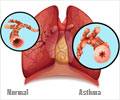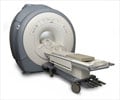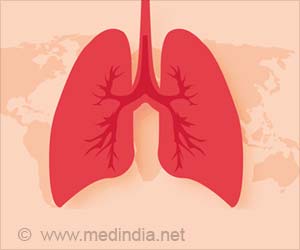Development of a Magnetic Resonance Imaging (MRI) can measure the lungs, especially the asthmatic airways, which helps provide personalizing treatment for Canadians with severe asthma.

‘Magnetic Resonance Imaging (MRI) helps identify the inflammatory and noninflammatory components of airway disease.’





According to the Canadian Lung Association and Asthma Canada, asthma a chronic airways disease, affects approximately three million Canadian adults and children and in 2016, 93 percent of Canadians with asthma reported they had poor control of their disease.Two major lung airway abnormalities make it difficult for patients with asthma to breathe: airway inflammation and airway sensitivity to triggers related to airway smooth muscle dysfunction. These often occur together in patients, although sometimes patients have flares that are triggered or dominated by only one of these conditions.
"Canadians with asthma currently undergo tests that do not measure the independent and distinct contributions of airway inflammation and airway sensitivity to triggers that account for their symptoms and need for medication," said Parraga, Professor at Western's Schulich School of Medicine & Dentistry and Scientist at Robarts Research Institute.
Now, for the first time, imaging experts at Western - in collaboration with a team at the Firestone Institute for Respiratory Health at McMaster University and St. Joseph's Healthcare Hamilton - are using two distinct measurements of mucus from the lungs (or sputum) in combination with MRI to quantify the different contributions of both airway inflammation and airway smooth muscle dysfunction in individual patients with severe asthma.
"Airway inflammation can be identified reliably by cell-based measurements of patient sputum and smooth muscle dysfunction can be identified by assessing airway sensitivity to stimuli, tests developed at McMaster University. It is quite important to identify these two separate components, particularly in patients with severe asthma, because the different abnormalities are treated with different therapies," said Dr. Parameswaran Nair, a Professor of Medicine at McMaster University.
Advertisement
The study was funded by the Canadian Respiratory Research Network, which aimed to stimulate collaborations across research disciplines, such as imaging and inflammatory research, and was supported by the post-doctoral fellowship of Sarah Svenningsen, PhD, to conduct this study at Robarts Research Institute in collaboration with the Firestone Institute for Respiratory Health.
The team is now embarking on studies to utilize this technology developed at Robarts to direct innovative therapies for patients with severe asthma. Lung MRI may help ensure that the right treatment can be delivered to the right asthma patient at the right time in order to abolish asthma symptoms and improve disease control.
Source-Eurekalert















